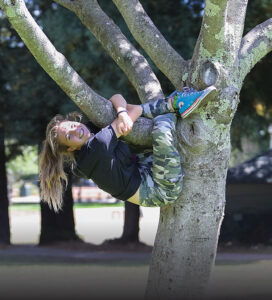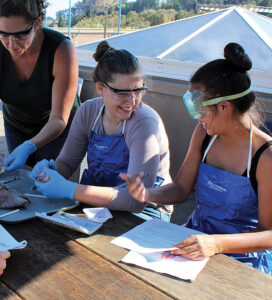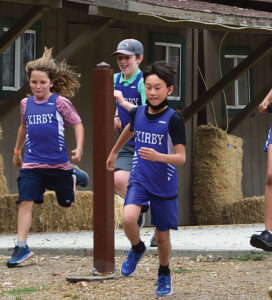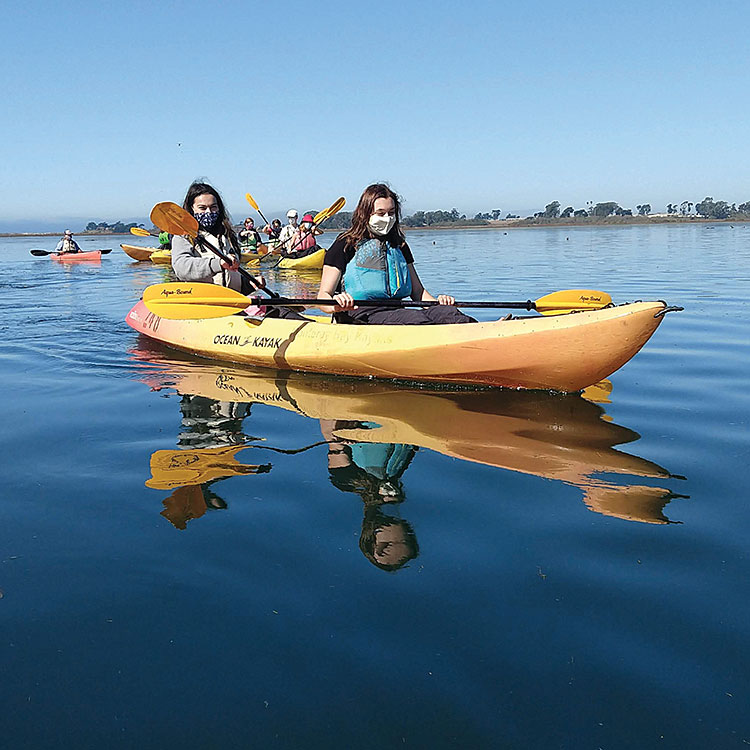By June Smith
During the pandemic, the Georgiana Bruce Kirby Preparatory School, founded in 1994, adapted to meet student needs.
![]() “COVID provided Kirby School with the opportunity to be creative in how to provide college prep education, feeling less like ‘recovery’ and more like adaptation,” says Communications Director Paige Berardo, “To adapt, we invested in professional development, supporting our teachers, and in technology for access to our program. We increased academic and mental health services to help students succeed in a more autonomous learning environment and changed the frequency of social connections (advisory groups, school meetings) to help overcome the effects of isolation.”
“COVID provided Kirby School with the opportunity to be creative in how to provide college prep education, feeling less like ‘recovery’ and more like adaptation,” says Communications Director Paige Berardo, “To adapt, we invested in professional development, supporting our teachers, and in technology for access to our program. We increased academic and mental health services to help students succeed in a more autonomous learning environment and changed the frequency of social connections (advisory groups, school meetings) to help overcome the effects of isolation.”
On the impact of enrollment, teachers, fundraising and the student experience, she says it has been consistent with reports from colleagues in the Bay Area.
COVID brought families closer together, both physically and emotionally.
Parents were more attuned to their child’s needs and became their advocate.
 COVID also created stress for faculty, who had to quickly adapt to new technology and shift their curriculum for new delivery methods while caring for their own families.
COVID also created stress for faculty, who had to quickly adapt to new technology and shift their curriculum for new delivery methods while caring for their own families.
Students had to adjust to a completely different learning environment and a total halt to their social connections, vitally important during adolescent years.
Tuition assistance was increased to ensure continuity of learning.
“Now that we are in person, we have responded to the national youth mental health crisis with full-time COVID-safe instruction,” Berardo said. “We added new events and activities, many of which took place outdoors, for fun and camaraderie.”
All schools had to adjust and adapt, and Kirby saw a need for increased communication.
Teachers leaned in with more frequency, frontloading upcoming activities to decrease student anxiety and offered more-advanced notice of assignments and assessments. When students struggled without the normal external cues that help skills develop, support was provided. A lot of trust was built.
Students needing technical assistance were helped, and a mental health practitioner was added to support students’ needs. Hybrid learning was offered all year for those needing to be home, and positive feedback came from parents about community Zoom meetings with the head of school.
 Parents felt the impact of COVID but through communication and a commitment to health and safety, had a higher level of comfort in sending their kids back to in-person school.
Parents felt the impact of COVID but through communication and a commitment to health and safety, had a higher level of comfort in sending their kids back to in-person school.
Enrollment trends are consistent with schools across California. Lower birth rates mean fewer children to educate. School staff attribute a small reduction in enrollment with the lack of affordable housing and the CZU fires.
As for fundraising, there was a strong commitment from the donor base, who funded several incredible projects over the past two-and-a-half-years, including a Recreation Area/Sport Court/Amphitheater.
Attention to safety led to good outcomes, according to longtime trustee Sandie Shoemaker.
“There were no COVID cases transmitted, and weekly PCR testing, daily fever checks, and indoor masking was required through the end of the year,” she said. “We were fortunate to have Dr. Tom Deetz, a PAMF (Palo Alto Medical Foundation) infectious disease expert advising the school on COVID policy.”
 There was no impact with the elimination of SAT and ACT tests. Students were offered over $6 million dollars in 4-year scholarships. Other criteria aside from test scores included student essays, recommendation letters from teachers and counselors, extracurricular activities, special projects students have completed, internships, and AP scores.
There was no impact with the elimination of SAT and ACT tests. Students were offered over $6 million dollars in 4-year scholarships. Other criteria aside from test scores included student essays, recommendation letters from teachers and counselors, extracurricular activities, special projects students have completed, internships, and AP scores.
Small class sizes and interactive classrooms mean that teachers know students well. Letters of recommendation provide excellent context of how students show up in an academic setting. A college counselor works closely with each student and writes personalized recommendations. Because English classes have a student-teacher ratio of 12-1, students develop excellent writing skills, and an essay workshop is held every summer.



